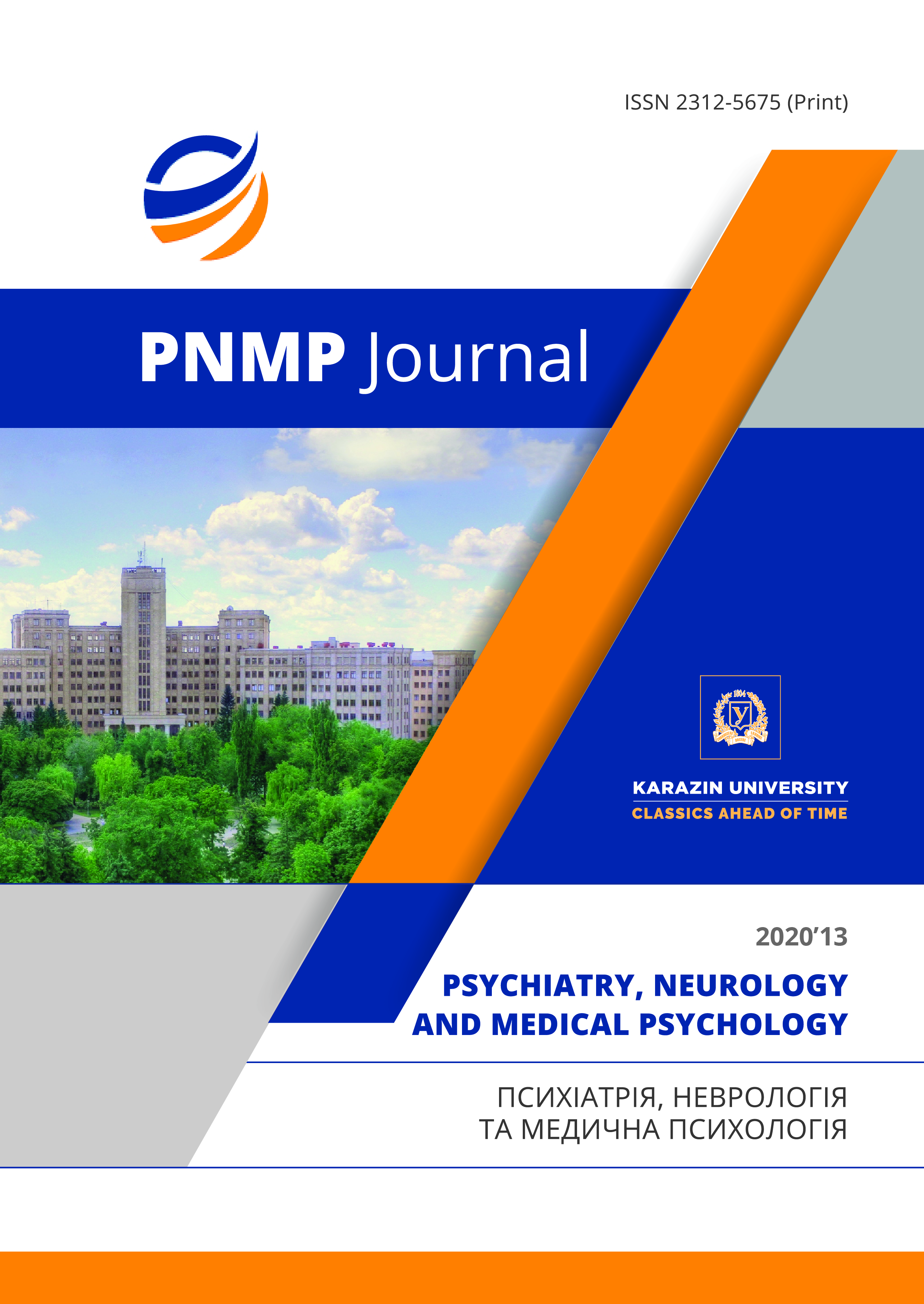Occurrence and comprehensive treatment of stress-related neurotic and somatoform disorders in students of different years and specialties
Abstract
Topicality. Importance of current studies dealing with stress-related neurotic and somatoform disorders at a young age is determined by the necessity to find new forms of psychological support directed to social adaptation and harmonious personal development of students.
Objective: to investigate occurrence of stress-related neurotic and somatoform disorders in students of different years and specialties, to develop a comprehensive treatment of the above conditions.
Materials and methods. 1235 students underwent a comprehensive check-up during the period from 2015 to 2017 keeping to the principles of bioethics and deontology. The following methods were applied: clinical, clinical-psychopathological, clinical-epidemiological, clinical-anamnestic, experimental-psychological and statistical. Sampling did not differ considerably by the sex and age, place of residence, and form of education. The check-ups were performed in the period between examinations.
Results. Investigation of the systematic sampling resulted in the fact that neurotic stress-related and somatoform disorders were found in 187 (15,14%) students that constituted 58,99% of all the nonpsychotic psychic disorders (NPD) diagnosed in young people. The nosology F 40.0-48.1 was found in 62 (33,16%) men and 125 (66,84%) women. The biggest amount of neurotic stress-related and somatoform disorders was diagnosed in the 1st and 3rd year students: 67,12% and 77,78% respectively (р<0,05). Those students studied on the specialties «General Medicine», «Stomatology», «Practical Psychology». Antidepressants, anxiolytics, anticonvulsive, nootropic agents, vitamins and various kinds of psychotherapy (cognitive-behavioral, systemic family, Gestalt, psychoanalysis, client-centered and body-focused therapy) were applied in the treatment of neurotic stress-related and somatoform disorders.
Conclusions. The obtained results should be considered in making screening diagnostic, therapeutic and preventive measures for the students at higher educational institutions.
Downloads
References
Lazarchuk O.V. Clinical and psychological aspects of neurotic, stress-related and somatoform disorders. Proceedings. Psychology and Pedagogy Series. 2009, no. 13, pp. 264-275. [in Ukr.]
Andryushchenko A.V. Prevalence and structure of mental disorders in general medicine. Mental disorders in general medicine. 2011, no. 1, pp. 14–27. [in Russ.]
Roca M., Gili M., Garcia-Garcia M. et al. Prevalence and comorbidity of common mental disorders in primary care. J. Affect. Disord. 2009. Vol. 119 (1–3), pp. 52–58. DOI: 10.1016/j.jad.2009.03.014
Wittchen HU, Jacobi F, Rehm J., [et al.] The size and burden of mental disorders and other disorders of the brain in Europe 2010. Europian Neuropsychopharmacology. 2011, no. 21(9), pp. 655–679. DOI: 10.1016/j.euroneuro.2011.07.018
Hiller W., Fichter M.M. High utilizers of medical care: a crucial subgroup among somatizing patients. Journal of Psychosomatic Research. 2004, no.56 (4), pp. 437–443. DOI: 10.1016/s0022-3999(03)00628-7
Olesen J., Gustavsson A., Svensson M. et al. The economic cost of brain disorders in Europe. European J. of Neurology. 2012, no.19 (1), pp. 155–162. DOI: 10.1111/j.1468-1331.2011.03590.x

